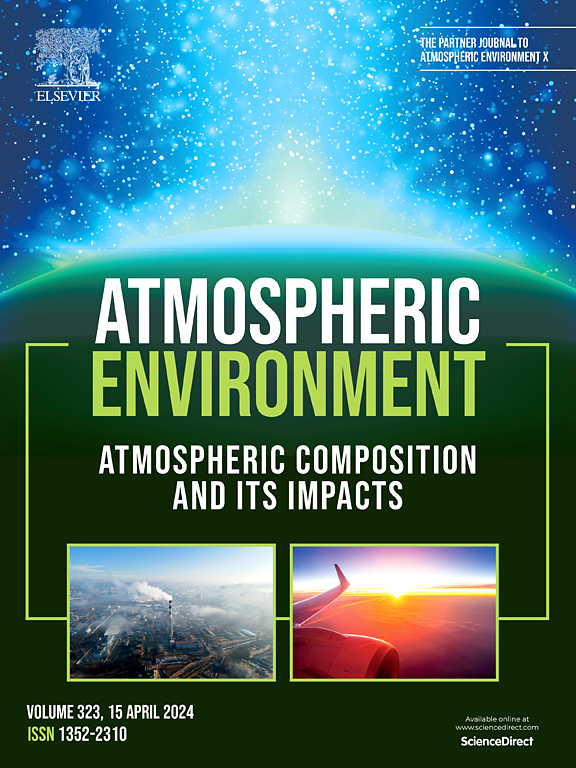Temperature dependent rate constants for the gas phase reactions of OH radical with first generation products of monoterpenes oxidation: nopinone, limononaldehyde, myrtenal and ketolimonene
IF 4.2
2区 环境科学与生态学
Q2 ENVIRONMENTAL SCIENCES
引用次数: 0
Abstract
Rate constants for the gas-phase reactions of hydroxyl radical with first-generation oxidation products of monoterpenes, namely nopinone, ketolimonene, myrtenal and limononaldehyde have been measured using a relative rate technique over the temperature range 298–353 K and atmospheric pressure of air in a 63 L atmospheric chamber. The experiments were conducted using different analytical techniques and different reference compounds. The rate constants obtained at 298 ± 2 K (in units of 10−11 cm3 molecule-l s-l) are: nopinone 1.82 ± 0.20; ketolimonene 13.2 ± 1.30; myrtenal 5.97 ± 0.80; and limononaldehyde 5.17 ± 0.44. A very weak temperature dependence in the temperature range 298–353 K was obtained for nopinone and limononaldehyde. Meanwhile, ketolimonene and myrtenal show a negative dependence over the temperature range studied. Atmospheric lifetimes towards OH radicals deduced from room temperature rate constants prove that once emitted into the atmosphere, all studied compounds can be degraded in less than one day and thus contribute to the photochemical pollution on a local or regional scale.
OH自由基与第一代单萜氧化产物nopinone, limononaldehyde, myrtenal and ketolimonene气相反应的温度依赖速率常数
用相对速率法测定了羟基自由基在温度298 ~ 353 K、气压为63 L的常压室中与第一代单萜氧化产物(即诺蒎酮、酮丙烯、桃金娘醛和柠檬醛)气相反应的速率常数。实验采用不同的分析技术和不同的参比化合物进行。在298±2 K下(以10−11 cm3分子-l s-l为单位)得到的速率常数为:nopinone 1.82±0.20;酮丙烯13.2±1.30;桃金娘酸5.97±0.80;柠檬醛5.17±0.44。在298 ~ 353 K的温度范围内,诺蒎酮和柠檬醛的温度依赖性非常弱。酮丙烯和桃金娘烯在温度范围内呈负相关关系。从室温速率常数推导出的OH自由基的大气寿命证明,一旦排放到大气中,所有研究的化合物都可以在不到一天的时间内降解,从而在局部或区域范围内造成光化学污染。
本文章由计算机程序翻译,如有差异,请以英文原文为准。
求助全文
约1分钟内获得全文
求助全文
来源期刊

Atmospheric Environment
环境科学-环境科学
CiteScore
9.40
自引率
8.00%
发文量
458
审稿时长
53 days
期刊介绍:
Atmospheric Environment has an open access mirror journal Atmospheric Environment: X, sharing the same aims and scope, editorial team, submission system and rigorous peer review.
Atmospheric Environment is the international journal for scientists in different disciplines related to atmospheric composition and its impacts. The journal publishes scientific articles with atmospheric relevance of emissions and depositions of gaseous and particulate compounds, chemical processes and physical effects in the atmosphere, as well as impacts of the changing atmospheric composition on human health, air quality, climate change, and ecosystems.
 求助内容:
求助内容: 应助结果提醒方式:
应助结果提醒方式:


